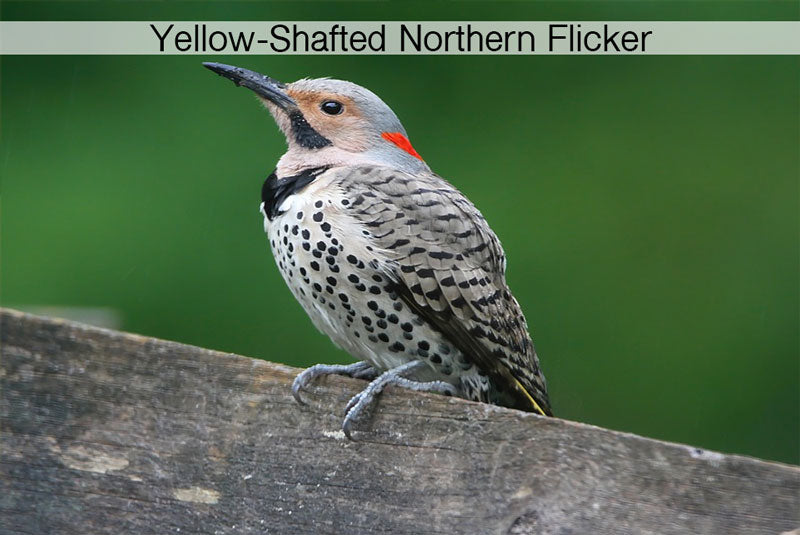Offer
Provide additional details about the offer you're running.
Provide additional details about the offer you're running.
Provide additional details about the offer you're running.

Once you know them, catching a glimpse of a northern flicker in flight is almost unmistakable. When flying away from you, these medium-sized woodpeckers produce a panache all their own with their easy-to-identify and completely customized markings.
As we stated above, these birds belong in the woodpecker family but don’t always play the part like their distant cousins such as the pileated woodpecker do. Instead, northern flickers are typically found foraging and feeding on the ground in some cases, among flocks of other bird species.
While they might spend much of their time on the ground, their flushing patterns have woodpecker written all over them. With a steady rise and periods of gliding, they mimic other woodpeckers perfectly until they land or perch. Rather than clinging to the bark on tree trunks, these birds will instead choose horizontal branches to perch upon.
Northern Flicker Variations
Truth be told, there are two main variants of northern flickers, yellow-shafted and red-shafted. They were once considered to be two different species, but have since been amalgamated but do carry considerable differences when it comes to appearances.
In addition to these two varieties, there is also a hybrid version that typically resides where the two variations intersect.
Yellow-Shafted Northern Flickers
These are the ones we are most familiar here in Ottawa and the Valley as well as the rest of eastern Canada. As their name suggests, these flickers are adorned with the wonderful yellow underbelly often seen in flight and often used as a primary identifier when spotted flushing from the ground.
In addition to the yellow shaft feathers on the flight and tail feathers, both male and females sport a red nape that is often easy to spot while viewing these birds. The main differentiator between the sexes is that the males sport a black whisker or a black patch of feathers that extends from the base of their beak to the cheek. The females are not equipped with this distinct marking.

Red-Shafted Northern Flicker
The northern flickers of the west are slightly drabber in appearance, without much of the brown hues as displayed in their eastern counterparts. Their upperparts are mainly grey and brown with the usual black barring. Again, as their name suggests, these flickers have a red colouring under their flight and tail feathers paired with a red whisker marking as opposed to the black whisker found in eastern males.
High Quality Blend